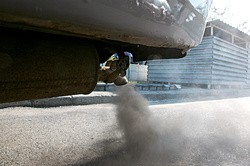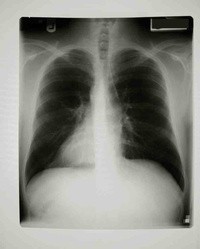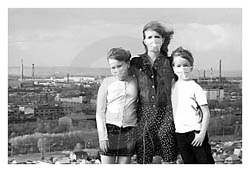Reasons-Facts
For smokefree Hungary!
Foreword
The climate change became a global problem which needs human intervention.
The solution presumes the active involvement of many participants. Though a considerable amount of the harmful gases that are responsible for global warming come into the environment through the production and the burning process of the fuels. However numerous developing tendencies were born in the world serving gradually as “greener” alternatives.
A few criticism to start with
“…diesel engine is becoming more marketable than the petrol engine simply because it is cheaper to run.”
Provided that the vehicle is under guarantee time… Beyond it the operation costs more than of a simple petrol system. Both the costs of production and the damage to the environment are higher. So the reason why the diesel engine is more marketable -of course the manufacturer decreases the costs of technologies as well – is not because of the cheaper manufacturing but because there is an increasing demand on the European market. In the USA there are still more petrol running vehicles.
“Worldwide lorries, trucks, coaches are diesel running vehicles.”
However the spread of diesel cars are characteristic in Europe but anywhere else it is practically negligeble. Europe imports diesel oil (for the large shortage) mainly from Russia, but also from North America.
Europe exports its diesel oil surpluss to the Far East. On the other hand a large amount of petrol is exported from Europe to North America where the fuel is transported also from Russia, Near East and South America.
So practically outside Europe the fuel of vehicles are decisively petrol. The reason can be partly the European’s price sensibility, on the other hand our ’environment consciousness’.
Our primary goal is to contribute with the help of our professional knowledge, technologies and mechanical outfit – to the increased protection of the environment and to the spread of a future alternative, the remarkably reasonable priced running autogas cars.
We are aiming at both in business and social relations for a responsible and honest behavior.
Diesel engines consumes 2-3 liters less so logically it is more environmental friendly. However the whole picture is more shaded.
The proportion of the petrol and diesel oil that can be obtained from one unit of petroleum- with appropriate fineries-can be moved into the one or the other direction. From economical reasons almost all finaries in Europe are developed for obtaining diesel oil. Finaries are basically to serve so it has to be driven by the market demands. If the demand were petrol then the diesel oil production were minimized which would not happen at the flick of a finger but it would be solvable.
Would the cities’ air become cleaner? Of course it would.
So from the raised problem’s point of view manufacturers are now in turn to burn the diesel oil sufficiently, environmentally sound according to the consumer and legal proceedings.
All in all the spreading of diesel cars raise unsolvable problems for the time being especially the transport of big cities.
Until then how many years will pass? How many townsmen will get cancer?
A few words about what aerosol (flue dust) is.
Atmospherical aerosols (flue dust, PM10 and PM2.5)
Atmospherical aerosols are liquid or solid particles in dispergated state contained by air as a medium. The lifespan of aerosol particles can be lasted from few minutes to even several months depending from the size and the mass of the particle. Their sizes fall between 0.001 and 100 micrometer. Their effect on the health depends on their sizes, as the bigger ones get stuck in the nose but the really small ones reach the bottom of the lungs. They may contain soot, organic matters, heavy metals, asbestos. Most of them cause cancer. The establishement of a uniform health end value is a complicated matter, as many aerosol constituting substances can be contageous even in a small quantity. Soot comes into the body through enhaling and it causes cancer.
Vehicle traffic has a great role in producing atmospherical aerosols. The aerosol emission of the diesel vehicles is significant. The components of the town aerosols are difficult to define as other pollutants stick to the particles ie.:PAHs, heavy metals. The WHO does not define an end value for the concentration of the particles coming from the traffic (primarily from diesel vehicles) as according to his viewpoint there is no such low concentration that would not harm the health.
About modern diesel vehicles can be stated that they have a higher rate in the harmful particle domain not only in comparison with the old ones. However the majority of people bases on their five senses not ever clapping for a sooty diesel.
The manufacturer is basically not concerned with the emission or the consumption as it is not controlled or checked formally by anyone. Thus it can occur that the emission of some components rise 10 or 100 times higher and consumption can increase as soon as we give richer gas. (The situation is similar if the temperature or the air pressure differ a bit from the value specified in the test cycle.)
SMOG ALERT!!!
It has happened which had had to be done long ago if it would not have lacked the legal authorization. In October 2008 in a decree the value of flue dust was defined. So if on two following days the values exceed 100 microgram/ cubicmeter than smog alert can be ordered.
In Budapest 150-160 microgram/cubicmeter is measured in general. But there is (was and will be) smog alert not only in the capital but in all the other big cities in Hungary.
So I repeat my question.
How many people in big cities will get cancer?
Why is the small soot particles more harmful than the big ones?
The soot particles of modern diesel engines have a faulty stucture and on their surface agressively reacting chemicals can be found in great quantity. Above this on the surface of Euro 4 soot particles there are a lot of connecting -OH detachments thus easily reacting with the hydrophil molecules of the organism.
 |
From the older diesel cars big, chemically natural, hydrophob (water repelling) – thus reacting more difficult with the molecules of the body – particles are emitted. |
There is no problem at all with soot by itself. For example when we are having diarrhoea in Summer because of spoiled bologna we take soot (namely active carbon) in a large amount which we of course buy nicely packed in the pharmacy. The particles coming from the exhaust manifold of diesel cars are harmful exactly for the reason that is on the other hand useful for diarrhoea. Since the surface of the greatly porous (let us imagine a terribly complecated spatial labyrynth) soot (namely carbon) is large and the carbon itself easyly cause to cohere all kinds of roving chemicals with free radicals. For instance the carbon cause to cohere the active bacteria at diarrhoea while the soot collects the harmful chemicals from the air which means exactly the same. The previous first collects the substances than got through the body it takes chemicals with itself while the later becoming saturated from the air and as a tiny dustbin empties the gethered content inside.
The smaller is the soot particle the larger is its surface in comparison with its surface. Moreover the surface of the soot particles coming from modern diesels are quite large as there are a lot of active chemicals seeking their pairs. The tiny soot is able to bind an awful amount of carcinogenic hydrocarbons.
Anyway our body is much less tougher contrary to the such fine smaller than 2.5 micron particles as the lung’s mucous membrane holds back the bigger particles effectively howeveer the ultrafine nano particles get across, straight into the bloodstream emptying the contageous, carcinogenic content while circulating in the organism which is understandably much more dangerous.
In order to remove the domain that is under 2500 nanometer (2.5 micron) from the smoke an enormous breakthrough is needed though having a great risk in developments. What if we fail to find a solution that is marketable, namely it does not make the dynamism of the car significantly worse still ensuring clean operation?
Considering all these the car manufacturer will not invest millions of Euros into further developments unless the particle size will be included in the emission standards.
On the other hand, DPF has already reached its most spectecular goal: the smoke has become invisible.
A few words about DPF (Diesel Particle Filter)
What is it for and why is it disfunctional?
DPF is basically filtering the second most harmful content the nitrogen oxides with an efficiency close to zero. There are already such catalytic converters that are suitable to excrete those substances (LNT urea –SCR-technologies) but they are applied in very few cars. DPF does not decrease benzene emission only minimally.
With the forthcomning of DPF it did not only failed to decrease the amount of carbon dioxide but even increased it in comparison with the traditional, unfiltered technologies- as it is believed- this gas is primarily responsible for the greenhouse effect although opinions just nowdays seem being modified. Also during the operation of the particle filter itself does come into being some extra carbon dioxide respectively during the production of the sulphur free diesel oil essential for the modern diesel injectors. Truely the latter happens not in the city but in the oil finery. Furthermore DPF spoils the efficiency of the engine as well thus in order to reach the same speed the gas pedal has to be pushed more which leads also to the encrease of carbon dioxide emission.
On the top of that the various precious metals (as platinum and palladium) used in the catalytic converters wear thin in time being emitted into the air through the exhaust pipe. This is an existant problem as precious metals were already found in the Greenlandic ice which could get there exclusively by athmospherical movments exactly from such engines. Furthermore these precious metals can easily enter into the nutrient cycles by the contribution of plants and smaller animals.
Summary
So the old diesel emits a lot of visible, in itself irritative bigger particle size soot that can cause chronic bronchitis, lung diseases, allergy and asthma morover a great amount of other contageous and carcinogenic chemicals.
The new , ultrafine mixture developing ‘pure’ diesel engine is not much better concerning the contageous carcinogenic chemicals but it burdens the environment with more carbon dioxide. Though the generally measured bigger than 2.5 micrometer particle emission is fragment of the old engine- as the few that is generated of the originally small amount is absorbed by the DPF – it produces a great amount of ultrafine nano size soot particles that the old diesel had not emitted at all.
 |
This ultrasmall particle – I have explained above already why- is to a greater extent carcinogenic and contageous. So we do not see it, slightly sense with our nose and we can measure it under laboratory circumstances. Nevertheless we can not truely sleep in peace because of it. |
A solution has to be found for this problem!
There is solution. It is solved in many different ways.
A bad example from Austria
In Winters the amount of flue dust emitted in Austria – which has become trendy in our country just nowdays- goes near the limits regularly not least because of the great amount of diesel cars. Thus they have codified that in Winter close to the big cities speed limits can be enacted so the 100 limit have apperaed on the motorways. However.
At diesels a wide-spread solution is the exhaust gas circulation (EGR) decreasing the nitrogen-oxid (NOx) emission in a great extent while the soot (and the flue dust) emission increases. The regulation is set in a way that both limits be reached in the standard cycle where the maximum speed is 120 km/h. However at 130-140 speed on the motorway the electronics usually switches on the EGR as NOx is not measured there.
As the cars crawling in the jam are the primary source of smoke it is not probable that making the traffic artificially slow on roads -where it could be smooth otherwise- would help solving the air pollution.
Thus the legistlators of good intent have introduced a bad law of speed limit: if diesel runs by 100 instead of 130 , then EGR switches on and the concentration of the flue dust not that became lower but even higher.
A good example from Australia
All the mass transportation vehicles run by autogas or duel fuel and above that diesel vehicle owners of dual fuel system are subsidized by the state.
Results:
International Emission Statistics:
8.7 billion liter diesel fuel is used in Australia yearly.
Each time operating on diesel fuel 2.7 Kgs greenhouse gas gets into the atmosphere.
Approximately 25 million tones of greenhouse gases are generated.
By using gas system the greenhouse gas emission decreases with 15 million tones yearly.
By using gas system the diesel oil consumption decreases with 20-30%.
In the reflection of all these an exasperating account about the Union and respectively from here, from Hungary!!!!!
Early mortality caused by aerosols
 |
We introduce in the below table the early mortality in the member states of the Union caused by aerosols (their common name is the flue dust) . Germany stands on the first place of the list where the annual mortality is 65 088. Hungary is the 8th in the line. |
| Country | Early Mortality |
| Germany | 65 088 |
| Italy | 39 436 |
| France | 36 868 |
| United Kingdom | 32 652 |
| Polland | 27 934 |
| Spain | 13 939 |
| Holland | 13 123 |
| Hungary | 11 067 |
| Belgium | 10 699 |
| Czech Republic | 7 996 |
| Austria | 4 634 |
For smokefree Hungary!!!
Turn to us with confidence!
Molnár Dieselgas
![]()

